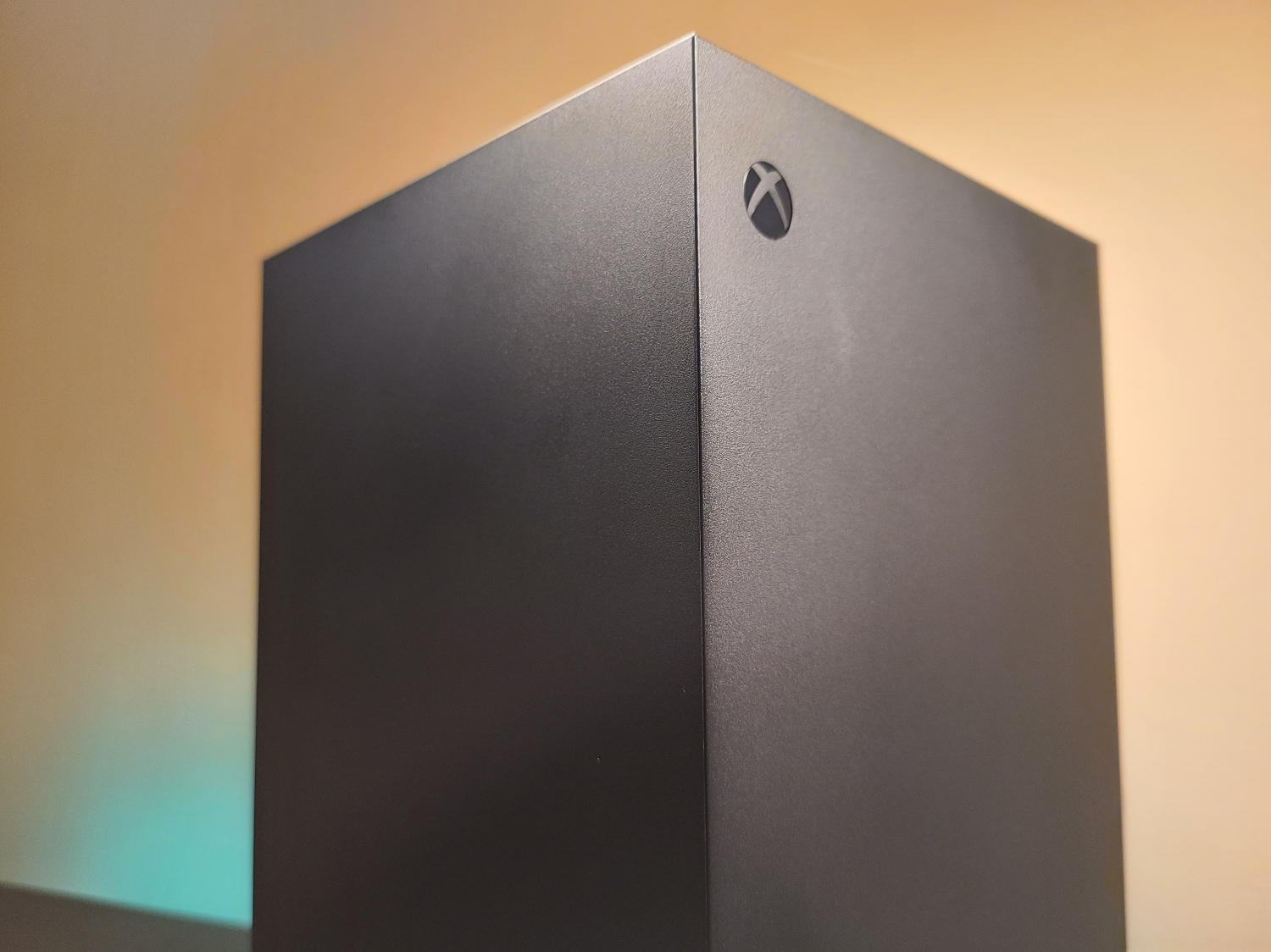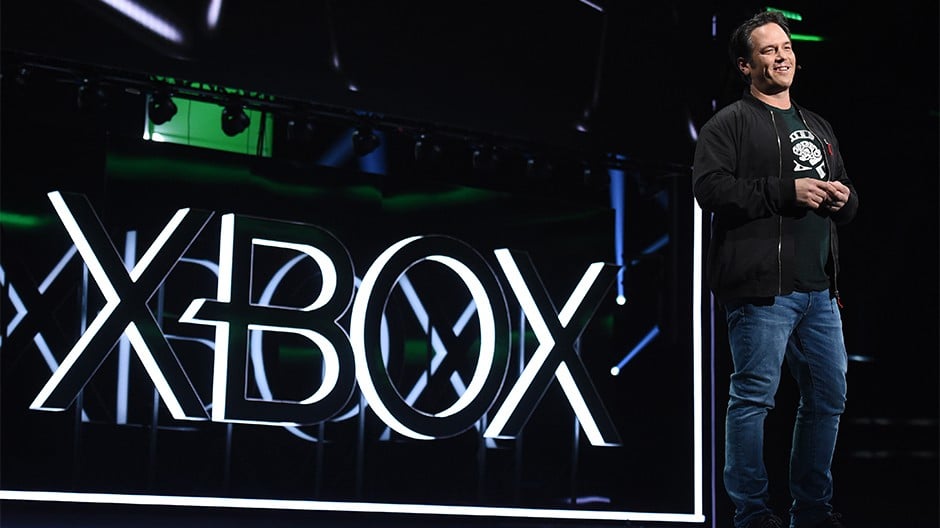thicc_girls_are_teh_best
Member
NOTE: This thread is EXCLUSIVELY for Sony discussion; for Microsoft discussion here is the companion thread!!!
---
Picking back up from the mid-gen refreshes speculation, here's revised 10th-gen speculation. This thread will focus on the Sony side. If any questions over how I arrive at some things (like HBM4), ask them in comments. Most of what you think is random, uses real data trends to extrapolate from. At end of day, this only speculation.
Long read, have been warned. Have fun!
--------
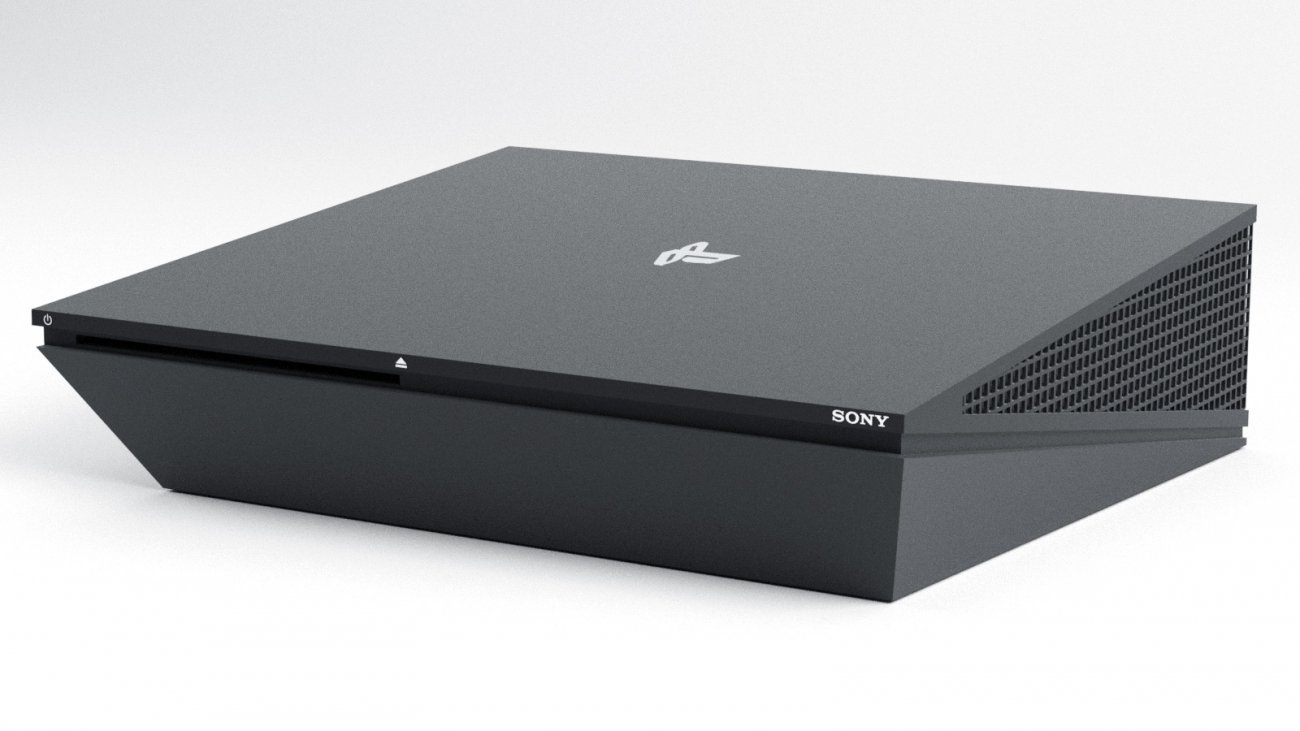
(Concept render of a PS6. Glad the old thread still had this linked )
)
[SONY PLAYSTATION 6]

[CPU]

[GPU]
>CLOCK FREQUENCIES: 3901.396 MHz (FULL), 4659.96 MHz (HALF)
>IPC: 2
>IPS: 6724.427 million IPS (FULL), 9319.9236 million IPS (HALF)
>THEORETICAL FLOATING POINT OPERATIONS PER SECOND: 39.95 TF (FULL), 23.859 TF (HALF)
># PRIM UNITS: 4 (2 each SE, 1 each SA)
># PRIMs/CLOCK PER UNIT: 4
># TRI RAS/CLOCK PER UNIT: 2
>PRIMITIVES PER CLOCK: 16
>TRIANGLES PER CLOCK: 8
>GEOMETRY CULLING RATE: 62.422 billion (FULL), 37.279 billion (HALF)
>TRIANGLE RASTERIZATION RATE: 31.211 billion (FULL), 18.639 billion (HALF)
>PIXEL FILL RATE: 499.378 Gpixels/s (FULL), 298.237 Gpixels/s (HALF)
>TEXTURE FILL RATE: 1248.446 Gtexels/s (FULL), 745.5938 Gtexels/s (HALF)
>THREAD DEPLOYMENT RATE: 40,960 (FULL), 20,480 (HALF)
>CACHE CAPACITY:
>L0$: 16 KB per CU (640 KB total)
>L1$: 64 KB per dual-CU/WGP (1.28 MB total)
>L2$: 512 KB per Array (2 MB total)
>L3$: 16 MB
>TOTAL: 19.92 MB
>CACHE BANDWIDTH:
>L0$: 39.55 TB/s (FULL), 23.62 TB/s (HALF)
>L1$: 27.685 TB/s (FULL), 16.534 TB/s (HALF) (L0$ * .70)
>L2$: 16.611 TB/s (FULL), 9.92 TB/s (HALF) (L1$ * .60)
>L3$: 8.3 TB/s (FULL), 4.96 TB/s (HALF) (L1$ * .30)
>TOTAL: 88.829 TB/s (FULL), 55.034 TB/s (HALF)
[AUDIO]
[MEMORY]
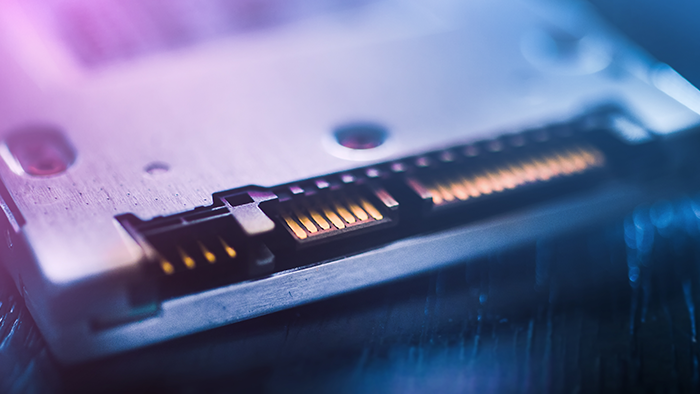
[I/O COMPRESSION/DECOMPRESSION/MEMORY CONTROLLER]
[PERIPHERAL SUPPORT]

[WIFI/ETHERNET/BLUETOOTH]
[VR SUPPORT]
[PRICING]
[RELEASE]
---
Picking back up from the mid-gen refreshes speculation, here's revised 10th-gen speculation. This thread will focus on the Sony side. If any questions over how I arrive at some things (like HBM4), ask them in comments. Most of what you think is random, uses real data trends to extrapolate from. At end of day, this only speculation.
Long read, have been warned. Have fun!
--------

(Concept render of a PS6. Glad the old thread still had this linked
[SONY PLAYSTATION 6]
>More or less continues traditional console design philosophy
>Comes with an Entry-level PSVR Gen 3 helmet for standard SKU
>Revised DualSense controller, now full VR-capable. Unique three-piece design, revamped haptics,
positional/motion/acceleration/proximity detection. Center piece usable as a room-scale calibration
and tracking module (extras can be purchased separately; wireless connection to mesh grid
network for expanded, scaled tracking)
>Significantly revamped OS for VR-native navigation, features, etc.
>Optional VR controls will also be available for users who prefer it
>Comes with an Entry-level PSVR Gen 3 helmet for standard SKU
>Revised DualSense controller, now full VR-capable. Unique three-piece design, revamped haptics,
positional/motion/acceleration/proximity detection. Center piece usable as a room-scale calibration
and tracking module (extras can be purchased separately; wireless connection to mesh grid
network for expanded, scaled tracking)
>Significantly revamped OS for VR-native navigation, features, etc.
>Optional VR controls will also be available for users who prefer it

[CPU]
>CORES: 8 (CPU block 1), 8 (CPU block 2)
>THREADS: 16 (CPU block 1), 8 (CPU block 2)
>CLOCK: 5.2 GHz (CPU block 1), 5.2 GHz (CPU block 2)
>L1$: 64 KB (per core, CPU B1), 32 KB (per core, CPU B2)
>L2$: 1 MB (per core, CPU B1), 1 MB (per CCX, CPU B2)
>L3$: 8 MB (all, CPU B1), 4 MB (CPU B2)
>L4$: 8 MB (shared, CPU B1 & B2)
>>NOTES: CPU B2 is repurposed integration of PlayStation Stream CPU. PlayStation Stream CPU is more advanced (i.e features) processor vs PlayStation Fold, still 8C/8T design, lower-clocked in PlayStation Stream. Design necessary as PS Stream provides native play of PS4 titles requiring 8C/8T setup with similar L2$ and L3$ implementation.
B2 cores based on lower-scale Zen-ARM variants; have certain reduced functionality (reduced FP and AVX 256) vs. B1 cores that are based on regular design. Cores B1 & B2 operate in HMP (Heterogeneous Multi-Processing) Mode.
>THREADS: 16 (CPU block 1), 8 (CPU block 2)
>CLOCK: 5.2 GHz (CPU block 1), 5.2 GHz (CPU block 2)
>L1$: 64 KB (per core, CPU B1), 32 KB (per core, CPU B2)
>L2$: 1 MB (per core, CPU B1), 1 MB (per CCX, CPU B2)
>L3$: 8 MB (all, CPU B1), 4 MB (CPU B2)
>L4$: 8 MB (shared, CPU B1 & B2)
>>NOTES: CPU B2 is repurposed integration of PlayStation Stream CPU. PlayStation Stream CPU is more advanced (i.e features) processor vs PlayStation Fold, still 8C/8T design, lower-clocked in PlayStation Stream. Design necessary as PS Stream provides native play of PS4 titles requiring 8C/8T setup with similar L2$ and L3$ implementation.
B2 cores based on lower-scale Zen-ARM variants; have certain reduced functionality (reduced FP and AVX 256) vs. B1 cores that are based on regular design. Cores B1 & B2 operate in HMP (Heterogeneous Multi-Processing) Mode.

[GPU]
>ARCHITECTURE: RDNA
>GENERATION: 7
>PROCESS: N3P
>CONFIG: Chiplet
>SHADER ENGINES: 2
>SHADER ARRAYS (PER SE): 2
>COMPUTE UNITS: 40 (20 per Shader Engine, 10 per Shader Array)
>COMPUTE UNIT CONFIGURATION: Dual CU
>SHADER CORES (PER CU): 128
>SHADER CORES (TOTAL): 5120
>ROPs: 128
>TMUs: 8 (per CU), 320 (total)
>ALUs/SHADER UNITS: 5120
>STATE MODES (IF ANY): 2; FULL (40 CUs), HALF (20 CUs)
>GENERATION: 7
>PROCESS: N3P
>CONFIG: Chiplet
>SHADER ENGINES: 2
>SHADER ARRAYS (PER SE): 2
>COMPUTE UNITS: 40 (20 per Shader Engine, 10 per Shader Array)
>COMPUTE UNIT CONFIGURATION: Dual CU
>SHADER CORES (PER CU): 128
>SHADER CORES (TOTAL): 5120
>ROPs: 128
>TMUs: 8 (per CU), 320 (total)
>ALUs/SHADER UNITS: 5120
>STATE MODES (IF ANY): 2; FULL (40 CUs), HALF (20 CUs)
>WHAT IS STATE MODE: A way to dynamically shift power across sections of the GPU so that a given power draw profile can
be maintained while increasing specification of performance for active parts of GPU. "Inactive" portion essentially goes into
Standby Mode, data in cache is kept resident as required. Since Inactive portion is still technically active (just at much lower
clocks, 25 MHz), specific low-impact tasks WRT data management can still be done on Inactive portion if desired.
>CLOCK FREQUENCIES: 3901.396 MHz (FULL), 4659.96 MHz (HALF)
>IPC: 2
>IPS: 6724.427 million IPS (FULL), 9319.9236 million IPS (HALF)
>THEORETICAL FLOATING POINT OPERATIONS PER SECOND: 39.95 TF (FULL), 23.859 TF (HALF)
># PRIM UNITS: 4 (2 each SE, 1 each SA)
># PRIMs/CLOCK PER UNIT: 4
># TRI RAS/CLOCK PER UNIT: 2
>PRIMITIVES PER CLOCK: 16
>TRIANGLES PER CLOCK: 8
>GEOMETRY CULLING RATE: 62.422 billion (FULL), 37.279 billion (HALF)
>TRIANGLE RASTERIZATION RATE: 31.211 billion (FULL), 18.639 billion (HALF)
>PIXEL FILL RATE: 499.378 Gpixels/s (FULL), 298.237 Gpixels/s (HALF)
>TEXTURE FILL RATE: 1248.446 Gtexels/s (FULL), 745.5938 Gtexels/s (HALF)
>THREAD DEPLOYMENT RATE: 40,960 (FULL), 20,480 (HALF)
>CACHE CAPACITY:
>L0$: 16 KB per CU (640 KB total)
>L1$: 64 KB per dual-CU/WGP (1.28 MB total)
>L2$: 512 KB per Array (2 MB total)
>L3$: 16 MB
>TOTAL: 19.92 MB
>CACHE BANDWIDTH:
>L0$: 39.55 TB/s (FULL), 23.62 TB/s (HALF)
>L1$: 27.685 TB/s (FULL), 16.534 TB/s (HALF) (L0$ * .70)
>L2$: 16.611 TB/s (FULL), 9.92 TB/s (HALF) (L1$ * .60)
>L3$: 8.3 TB/s (FULL), 4.96 TB/s (HALF) (L1$ * .30)
>TOTAL: 88.829 TB/s (FULL), 55.034 TB/s (HALF)
[TASK ACCELERATION ENGINE]
**Heavily modified CU for various hardware-based RT, ML, IU, AI tasks
**Each Shader Engine is paired with a Task Acceleration Engine
**TAEs can house either 1 or 2 Task Acceleration Arrays
**TAAs can be of any given size when it comes to TAUs; however ideal
balanced designs generally call for TAAs that are 50% the core unit
count of a design's Shader Array (i.e a design with 5 Dual CU Shader
Arrays (10 CUs) having 5 TAU TAAs).
**TAUs can be thought of as pseudo-FPGA cores; each unit has internal
fixed-function hardware as well as a modified frontend compared
to normal CUs. TAUs also can range from having the following:
>2,000 To 8,000 logic cells
>16 Kb (2 KB) to 128 Kb (16 KB) distributed RAM (LUT) (acts as L0$)
>64 Kb (8 KB) to 512 Kb (64 KB) BRAM (acts as L1$)
>Internal Command Sync & Program Interface Configuration core
(directed by application to program the FPGA logic into
desired program state, manage unit state)
>Compute Thread Controller core (this is what programmers
interface with in dispatching code for the configured units
in the TAA to execute)
>1 Mb (128 KB) to 4 Mb (512 KB) SRAM (L2$, shared with all units in TAA;
meant for processed data locality storage)
>Shared 8 MB XIP (Execute-in-Place) Resource State Preset-allocated
MRAM (holds the microcode in bit-addressable/byte-addressable
format for immediate configuration)*
* = Will be able to be updated with future firmware changes
* = Shared between both TAAs
* = Simply used to configure the FPGA logic & fixed-function
aggregate unit states to specific profile presets (RT, ML, AI,
or IU) by storing the relevant set-up and configure/compile data
># TAEs: 2 (1 per SA)
># TASK ACCELERATION UNITS (TAU) PER TAE: 5
>LOGIC CELLS: 5000 (per TAU); 25,000 (per TAE), 50,000 (total)
>LUT RAM (L0$): 12 KB (per TAU), 48 KB (per TAE), 96 KB (total)
>BRAM (L1$): 48 KB (per TAU), 240 KB (per TAE), 480 KB (total)
>SRAM (L2$): 384 KB (per TAE), 768 KB (total)
>MRAM: 8 MB (total)
># CU: 1 (PER DUAL CU IN SA), 5 (PER SA), 10 (TOTAL)
**Each Shader Engine is paired with a Task Acceleration Engine
**TAEs can house either 1 or 2 Task Acceleration Arrays
**TAAs can be of any given size when it comes to TAUs; however ideal
balanced designs generally call for TAAs that are 50% the core unit
count of a design's Shader Array (i.e a design with 5 Dual CU Shader
Arrays (10 CUs) having 5 TAU TAAs).
**TAUs can be thought of as pseudo-FPGA cores; each unit has internal
fixed-function hardware as well as a modified frontend compared
to normal CUs. TAUs also can range from having the following:
>2,000 To 8,000 logic cells
>16 Kb (2 KB) to 128 Kb (16 KB) distributed RAM (LUT) (acts as L0$)
>64 Kb (8 KB) to 512 Kb (64 KB) BRAM (acts as L1$)
>Internal Command Sync & Program Interface Configuration core
(directed by application to program the FPGA logic into
desired program state, manage unit state)
>Compute Thread Controller core (this is what programmers
interface with in dispatching code for the configured units
in the TAA to execute)
>1 Mb (128 KB) to 4 Mb (512 KB) SRAM (L2$, shared with all units in TAA;
meant for processed data locality storage)
>Shared 8 MB XIP (Execute-in-Place) Resource State Preset-allocated
MRAM (holds the microcode in bit-addressable/byte-addressable
format for immediate configuration)*
* = Will be able to be updated with future firmware changes
* = Shared between both TAAs
* = Simply used to configure the FPGA logic & fixed-function
aggregate unit states to specific profile presets (RT, ML, AI,
or IU) by storing the relevant set-up and configure/compile data
># TAEs: 2 (1 per SA)
># TASK ACCELERATION UNITS (TAU) PER TAE: 5
>LOGIC CELLS: 5000 (per TAU); 25,000 (per TAE), 50,000 (total)
>LUT RAM (L0$): 12 KB (per TAU), 48 KB (per TAE), 96 KB (total)
>BRAM (L1$): 48 KB (per TAU), 240 KB (per TAE), 480 KB (total)
>SRAM (L2$): 384 KB (per TAE), 768 KB (total)
>MRAM: 8 MB (total)
># CU: 1 (PER DUAL CU IN SA), 5 (PER SA), 10 (TOTAL)
[AUDIO]
>ARCHITECTURE: Tempest Audio (Tempest Audio Engine Next (TAEN))
>GENERATION: 2
>DSPs: 2
>PROGRAMMABLE LOGIC: 1
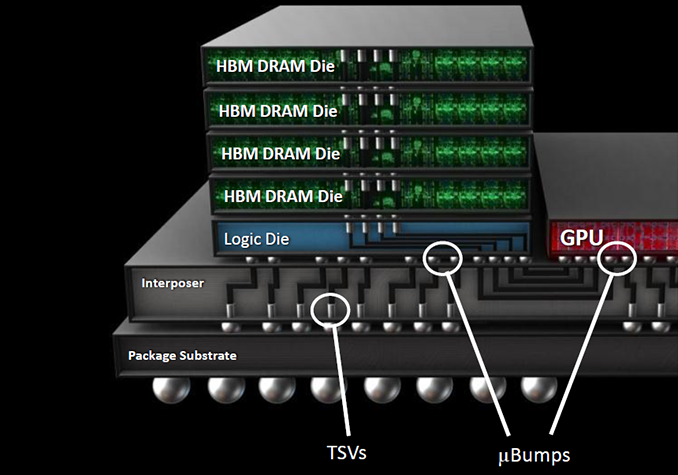
>GENERATION: 2
>DSPs: 2
>PROGRAMMABLE LOGIC: 1
>Modified single CU core
>3.9 GHz (fixed clock)
>8 KB L0$, 32 KB L1$, 128 KB L2$DFD
>No L3$
>~ 1 TF (998.75 GFLOPs)
>Can leverage up to 40 GB/s of system bandwidth
>3.9 GHz (fixed clock)
>8 KB L0$, 32 KB L1$, 128 KB L2$DFD
>No L3$
>~ 1 TF (998.75 GFLOPs)
>Can leverage up to 40 GB/s of system bandwidth

[MEMORY]
>TYPE: HBM4E
>GENERATION: 1
>MODULE CAPACITY: 2 GB
>MODULE AMOUNT: 16x
>CONFIGURATION: 1X 16-HI
>I/O PIN BANDWIDTH: 6.2 Gbps (775 MB/s)
>I/O PIN COUNT: 128
>BUS WIDTH: 2048-bit
>MODULE BANDWIDTH: 99.2 GB/s
>TOTAL BANDWIDTH: 1587.2 GB/s (1.5872 TB/s)
>TOTAL CAPACITY: 32 GB
>GENERATION: 1
>MODULE CAPACITY: 2 GB
>MODULE AMOUNT: 16x
>CONFIGURATION: 1X 16-HI
>I/O PIN BANDWIDTH: 6.2 Gbps (775 MB/s)
>I/O PIN COUNT: 128
>BUS WIDTH: 2048-bit
>MODULE BANDWIDTH: 99.2 GB/s
>TOTAL BANDWIDTH: 1587.2 GB/s (1.5872 TB/s)
>TOTAL CAPACITY: 32 GB

[I/O COMPRESSION/DECOMPRESSION/MEMORY CONTROLLER]
[SSD]
[COMPRESSOR/DECOMPRESSOR/MANAGEMENT]
>FORM FACTOR: M.2
>INTERFACE: PCIe-CXL
>INTERFACE GENERATION: 6.0
>CONNECTION SLOT(S): 1x (x4)
>NAND TYPE: ZNAND
>NAND MODULE CAPACITY: 2 Tb (256 GB)
>NAND MODULE BANDWIDTH: 2 GB/s
>NAND MODULE LATENCY: 1.8 ms
>NAND MODULE CHANNELS: 4 (per module), 32 (total)
># NAND MODULES: 8x
>INTERFACE: PCIe-CXL
>INTERFACE GENERATION: 6.0
>CONNECTION SLOT(S): 1x (x4)
>NAND TYPE: ZNAND
>NAND MODULE CAPACITY: 2 Tb (256 GB)
>NAND MODULE BANDWIDTH: 2 GB/s
>NAND MODULE LATENCY: 1.8 ms
>NAND MODULE CHANNELS: 4 (per module), 32 (total)
># NAND MODULES: 8x
>DEVICE BANDWIDTH: 16 GB/s
>MAXIMUM SUPPORTED BANDWIDTH: 32 GB/s
>DRIVE CAPACITY: 2 TB (2048 GB)
>MAXIMUM SUPPORTED DRIVE CAPACITY: 16 TB (16384 GB)
>MAXIMUM SUPPORTED BANDWIDTH: 32 GB/s
>DRIVE CAPACITY: 2 TB (2048 GB)
>MAXIMUM SUPPORTED DRIVE CAPACITY: 16 TB (16384 GB)
[FLASH MEMORY CONTROLLER]>STORAGE CACHE: IFC-SRAM, 384 MB
>STATUS: Internal cache control, GPU L4$ (shared cache)
>INTERFACE SUPPORT: x4 (full) M.2 PCIe-CXL 6.0 NVMe, x2 (half) M.2 PCIe-CXL 6.0 NVMe (either/or)
>BANDWIDTH CAPACITY (CACHE): 4150 GB/s (4.15 TB/s)
>LATENCY THRESHOLD: Sub-100 ns
>STATUS: Internal cache control, GPU L4$ (shared cache)
**Specific implementation of Infinity Cache level for PlayStation 6
**Can replicate an approach similar to NVRAM without need reworking
of underlying memory sub-systems outside of virtual dynamic partition
scaling of the cache pool.
**Decompressor can stream through 96 GB of storage data into 384 MB cache
pool (would require 250 data block-buffer write cycles per second to the cache);
GPU can then access as an L4$ type Infinity Cache via an IFC cache
controller fabric (shared with the decompression hardware).
**Decompression block & flash memory controller logic sorts management of
cache coherency routines.
**Can replicate an approach similar to NVRAM without need reworking
of underlying memory sub-systems outside of virtual dynamic partition
scaling of the cache pool.
**Decompressor can stream through 96 GB of storage data into 384 MB cache
pool (would require 250 data block-buffer write cycles per second to the cache);
GPU can then access as an L4$ type Infinity Cache via an IFC cache
controller fabric (shared with the decompression hardware).
**Decompression block & flash memory controller logic sorts management of
cache coherency routines.
>INTERFACE SUPPORT: x4 (full) M.2 PCIe-CXL 6.0 NVMe, x2 (half) M.2 PCIe-CXL 6.0 NVMe (either/or)
>BANDWIDTH CAPACITY (CACHE): 4150 GB/s (4.15 TB/s)
>LATENCY THRESHOLD: Sub-100 ns
[COMPRESSOR/DECOMPRESSOR/MANAGEMENT]
>DECOMPRESSION BANDWIDTH LIMIT (HARDWARE): 96 GB/s
>DECOMPRESSION RATIO: 6:1
>COMPRESSION BANDWIDTH LIMIT (HARDWARE): 96 GB/s
>COMPRESSION RATIO: 6:1
># ENGINES: 4
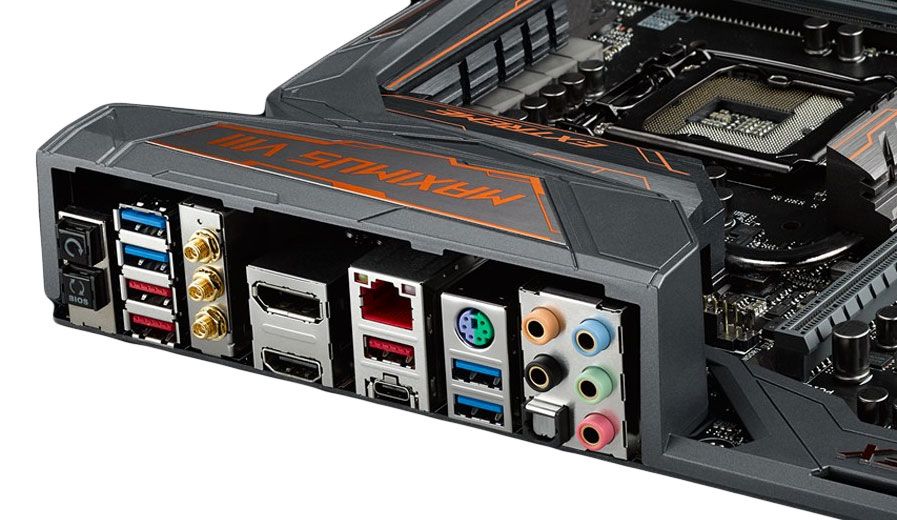
>DECOMPRESSION RATIO: 6:1
>COMPRESSION BANDWIDTH LIMIT (HARDWARE): 96 GB/s
>COMPRESSION RATIO: 6:1
># ENGINES: 4
1: IFC-SRAM Data Management Engine (DME)
2: RAM Data Management Engine (DME)
3: Network Data Management Engine (DME)
**Management for data over wifi and ethernet ports
4: Overhead/General Management Core Engine
**Orchestrates comms of the other three DMEs
2: RAM Data Management Engine (DME)
3: Network Data Management Engine (DME)
**Management for data over wifi and ethernet ports
4: Overhead/General Management Core Engine
**Orchestrates comms of the other three DMEs

[PERIPHERAL SUPPORT]
>USB GENERATION SUPPORT: GEN 1, GEN 2, GEN 3, GEN 4
>USB-C SUPPORT: YES
># USB PORTS: 4
>MICRO SD SUPPORT: YES
># MICRO SD SLOTS: 1 (FRONT, UHS-III, SDHC class)
>THUNDERBOLT SUPPORT: NO
>USB-C SUPPORT: YES
># USB PORTS: 4
>FRONT: Custom USB Gen 4 Type-C 3x2 Alt-Mode data port (VR), 1x regular USB Gen 4 Type-C 2x2 port
(controllers, charging kits, etc.)
>BACK: 1x USB Gen 4 Type-A 2x2 port, 1x USB Gen 3 port
(controllers, charging kits, etc.)
>BACK: 1x USB Gen 4 Type-A 2x2 port, 1x USB Gen 3 port
>MICRO SD SUPPORT: YES
*Used for physical media delivery (128 GB/192 GB Game Cards). Managed by FMC & Decompressor.
*Game Card Bandwidth: 60 MB/s
*Game Card Bandwidth: 60 MB/s
># MICRO SD SLOTS: 1 (FRONT, UHS-III, SDHC class)
>THUNDERBOLT SUPPORT: NO

[WIFI/ETHERNET/BLUETOOTH]
[ETHERNET]

>IMPLEMENTATION: Single Port
>ETHERNET PHYSICAL LAYER: 25 Gbit
>NAME: 25GBASE
>STANDARD: 802.3bq-2016
>CONNECTOR: RJ45
>LINE CODE: 64b/66b
>TRANSCEIVER MODULE: SFP28
>RECOMMENDED CABLE: 25GBASE-CR, 25GBASE-CR-S
>BANDWIDTH: 3.125 GB/s
>ETHERNET PHYSICAL LAYER: 25 Gbit
>NAME: 25GBASE
>STANDARD: 802.3bq-2016
>CONNECTOR: RJ45
>LINE CODE: 64b/66b
>TRANSCEIVER MODULE: SFP28
>RECOMMENDED CABLE: 25GBASE-CR, 25GBASE-CR-S
>BANDWIDTH: 3.125 GB/s
[WIFI]>IMPLEMENTATION: Single Module
>NAME: Wifi 7
>STANDARD: 801.11acx
>ENCODE RATE: 8b/10b encoding
>MU-MIMO STREAMS: 5
>BANDWIDTH: 2925.427 Mbps per MIMO, 14.627 Gbps theoretical, 1.828 GB/s converted
>NAME: Wifi 7
>STANDARD: 801.11acx
>ENCODE RATE: 8b/10b encoding
>MU-MIMO STREAMS: 5
>BANDWIDTH: 2925.427 Mbps per MIMO, 14.627 Gbps theoretical, 1.828 GB/s converted

[VR SUPPORT]
>1x Entry-Level PSVR Gen 3 headset included with PS6
>Headsets also compatible with PC as VR peripheral units
>Includes wired (USB Gen 4 3x2 split as 4x USB Gen 3-speed Type-C ports), proprietary
connection w/ safety mechanisms to secure connection line
>Included VR helmet supports "2K" (1080p) 120 Hz
>10th gen PSVR headsets come in 3 model variants:
Wifi 7-based, following specs:
>Second version, performance-level wireless VR module, has specs of:

>Headsets also compatible with PC as VR peripheral units
>Includes wired (USB Gen 4 3x2 split as 4x USB Gen 3-speed Type-C ports), proprietary
connection w/ safety mechanisms to secure connection line
>Included VR helmet supports "2K" (1080p) 120 Hz
>10th gen PSVR headsets come in 3 model variants:
>ENTRY: Supports up to 2K (1080p) 120 Hz, per eye. $129.99 MSRP (1x with every PS6)
>Optional wireless module sold separately; plugs into system's USB 4 Gen 4 3x2 port.>Bandwidth rate: 8 BPC/RGB/No Compression/No Timing (6.37 Gbit/s (796 MB/s) * 2 = 12.74 Gbit/s (1.5925 GB/s))
lower end, 8 BPC/RGB/No Compression/CVT Timing (7.27 Gbit/s (908.75 MB/s) * 2 = 14.54 Gbit/s (1.8175 GB/s))
higher end.
>W/ USB 4 Gen 3x2 128/132b Encoding: 13.138 Gbit/s (1.642 GB/s) lower end, 14.994 Gbit/s
(1.874 GB/s) higher end
>W/ WiFi 7E: 13.66 Gbit/s (1.707 GB/s)(lower end), 15.59 Gbit/s (1.94 GB/s)
(higher end)(96% utilization on wireless module only); 16.67 Gbit/s (2.08 GB/s)
(lower end), 19.49 Gbit/s (2.436 GB/s)(higher end)(75% utilization on standard WiFi 7E
transmission devices).
>Built for uncompressed 2K 120 Hz per eye
>Built-in speakers
>Built-in entry level microphone
>Internal battery; can charge through the USB port when in wired mode. Can
also charge wireless via wireless transmission unit's charging station feature
(sold separately).
>Comes with 9' USB Type-C cable for wired play, charging, and data transmission
>160 degree FOV
>Built-in 2x 320 MHz bandwidth MU-MIMO antenna streams
lower end, 8 BPC/RGB/No Compression/CVT Timing (7.27 Gbit/s (908.75 MB/s) * 2 = 14.54 Gbit/s (1.8175 GB/s))
higher end.
>W/ USB 4 Gen 3x2 128/132b Encoding: 13.138 Gbit/s (1.642 GB/s) lower end, 14.994 Gbit/s
(1.874 GB/s) higher end
>W/ WiFi 7E: 13.66 Gbit/s (1.707 GB/s)(lower end), 15.59 Gbit/s (1.94 GB/s)
(higher end)(96% utilization on wireless module only); 16.67 Gbit/s (2.08 GB/s)
(lower end), 19.49 Gbit/s (2.436 GB/s)(higher end)(75% utilization on standard WiFi 7E
transmission devices).
>Built for uncompressed 2K 120 Hz per eye
>Built-in speakers
>Built-in entry level microphone
>Internal battery; can charge through the USB port when in wired mode. Can
also charge wireless via wireless transmission unit's charging station feature
(sold separately).
>Comes with 9' USB Type-C cable for wired play, charging, and data transmission
>160 degree FOV
>Built-in 2x 320 MHz bandwidth MU-MIMO antenna streams
>ENTHUSIAST: Supports up to native QHD (1440p) 90 Hz per eye. $199.99 MSRP>Bandwidth rate: 10 BPC/RGB/No Compression/No Timing (9.95 Gbit/s (1.24 GB/s) * 2 = 19.9 Gbit/s (2.48 GB/s))
lower end, 10 BPC/RGB/No Compression/CVT-RB Timing (11.04 Gbit/s (1.38 GB/s( * 2 = 22.08 Gbit/s (2.76 GB/s))
higher end.
>With USB 4 Gen 3x2 128/132b Encoding: 20.52 Gbit/s (2.56 GB/s) lower end, 22.77 Gbit/s
(2.846 GB/s) higher end
>W/ WiFi 7E: 20.696 Gbit/s (2.587 GB/s)(lower end), 22.96 Gbit/s (2.87 GB/s)
(higher end)(96% utilization on wireless module only); 24.875 Gbit/s (3.109 GB/s)
(lower end), 27.6 Gbit/s (3.45 GB/s)(higher end)(75% utilization on standard WiFi 7E
transmission devices).
>Built-in speakers
>Built-in upgraded microphone
>Internal battery; charge through USB port in wired mode. Can
also charge wireless if used with wireless transmission unit via
proximity with unit charge station functionality (sold separately).
>3.5 hours on full charge for wireless play.
>Comes with 12' USB Type-C cable for wired play, charging, and data transmission
>160 degree FOV
>Built-in 2x 320 MHz bandwidth MU-MIMO antenna streams
lower end, 10 BPC/RGB/No Compression/CVT-RB Timing (11.04 Gbit/s (1.38 GB/s( * 2 = 22.08 Gbit/s (2.76 GB/s))
higher end.
>With USB 4 Gen 3x2 128/132b Encoding: 20.52 Gbit/s (2.56 GB/s) lower end, 22.77 Gbit/s
(2.846 GB/s) higher end
>W/ WiFi 7E: 20.696 Gbit/s (2.587 GB/s)(lower end), 22.96 Gbit/s (2.87 GB/s)
(higher end)(96% utilization on wireless module only); 24.875 Gbit/s (3.109 GB/s)
(lower end), 27.6 Gbit/s (3.45 GB/s)(higher end)(75% utilization on standard WiFi 7E
transmission devices).
>Built-in speakers
>Built-in upgraded microphone
>Internal battery; charge through USB port in wired mode. Can
also charge wireless if used with wireless transmission unit via
proximity with unit charge station functionality (sold separately).
>3.5 hours on full charge for wireless play.
>Comes with 12' USB Type-C cable for wired play, charging, and data transmission
>160 degree FOV
>Built-in 2x 320 MHz bandwidth MU-MIMO antenna streams
>PERFORMANCE: Supports up to native 4K 90 Hz per eye. $399.99 MSRP>Bandwidth rate: 10 BPC/YCbCr 4:4:2/No Compression/No Timing (14.93 Gbit/s (1.866 GB/s) * 2 = 29.86 Gbit/s (3.73
GB/s)) lower end, 10 BPC/YCbCr 4:4:2/No Compression/CVT-RB(16.23 Gbit/s (2.028 GB/s( * 2 = 32.46 Gbit/s (4.05
GB/s)) higher end.
>W/ USB 4 Gen 3x2 128/132b Encoding: 30.79 Gbit/s (3.849 GB/s) lower end, 33.474 Gbit/s
(4.184 GB/s) higher end
>W/ WiFi 7E: 31.0544 Gbit/s (3.8818 GB/s)(lower end), 33.75 Gbit/s (4.21 GB/s)
(higher end)(96% utilization on wireless module only); 37.325 Gbit/s (4.66 GB/s)
(lower end), 40.575 Gbit/s (5.0718 GB/s)(higher end)(75% utilization on standard WiFi 7E
transmission devices)*
* = 4K 90 Hz native refresh rate not provided with standard
WiFi 7E transmission devices
GB/s)) lower end, 10 BPC/YCbCr 4:4:2/No Compression/CVT-RB(16.23 Gbit/s (2.028 GB/s( * 2 = 32.46 Gbit/s (4.05
GB/s)) higher end.
>W/ USB 4 Gen 3x2 128/132b Encoding: 30.79 Gbit/s (3.849 GB/s) lower end, 33.474 Gbit/s
(4.184 GB/s) higher end
>W/ WiFi 7E: 31.0544 Gbit/s (3.8818 GB/s)(lower end), 33.75 Gbit/s (4.21 GB/s)
(higher end)(96% utilization on wireless module only); 37.325 Gbit/s (4.66 GB/s)
(lower end), 40.575 Gbit/s (5.0718 GB/s)(higher end)(75% utilization on standard WiFi 7E
transmission devices)*
* = 4K 90 Hz native refresh rate not provided with standard
WiFi 7E transmission devices
>Built-in speakers
>Built-in upgraded microphone
>Internal battery; charge through USB port in wired mode. Can
also charge wireless if used with wireless transmission unit via
proximity with unit charge station functionality (sold separately).
>3.5 hours on full charge for wireless play.
>Comes with 12' USB Type-C cable for wired play, charging, and data transmission
>160 degree FOV
>Built-in 2x 320 MHz bandwidth MU-MIMO antenna streams
Wifi 7-based, following specs:
>Five MU-MIMO antenna streams
>7 GHz band (7234 MHz)
>Compatible with 320 MHz channel width
>2925.427 Mbps per MIMO
>14.627 Gbps theoretical
>1.828 GB/s converted
>~ 1.75 GB/s effective (96% utilization)
>Can support Entry headsets (1x, ALL. 2x, DSC 3, ALL), Enthusiast (1x, 10 BPC/RGB/No Compression/No Timing,
lower end), Entry headset (3x, ALL @ 90 Hz, DSC 3), (1x Entry (10 BPC/RGB/DCS 3/CVT-RB) + 1x Enthusiast
(10 BPC/RGB/DCS 3/CVT-RB))
>Eight-core/Eight-thread high-end ZEN-ARM processor block (repurposed PS6 CPU B2)
>Modified/repurposed GPU CU core
>Built-in compression hardware with DSC 3.0x support
>512 MB LPDDR5 RAM
>1 GB NAND
>MSRP $129.99
>7 GHz band (7234 MHz)
>Compatible with 320 MHz channel width
>2925.427 Mbps per MIMO
>14.627 Gbps theoretical
>1.828 GB/s converted
>~ 1.75 GB/s effective (96% utilization)
>Can support Entry headsets (1x, ALL. 2x, DSC 3, ALL), Enthusiast (1x, 10 BPC/RGB/No Compression/No Timing,
lower end), Entry headset (3x, ALL @ 90 Hz, DSC 3), (1x Entry (10 BPC/RGB/DCS 3/CVT-RB) + 1x Enthusiast
(10 BPC/RGB/DCS 3/CVT-RB))
>Eight-core/Eight-thread high-end ZEN-ARM processor block (repurposed PS6 CPU B2)
>Modified/repurposed GPU CU core
>Built-in compression hardware with DSC 3.0x support
>512 MB LPDDR5 RAM
>1 GB NAND
>MSRP $129.99
>Second version, performance-level wireless VR module, has specs of:
>Ten MU-MIMO antenna streams
>Simultaneous dual-band (7 GHz (7234 MHz) + 7 GHz (7234 MHz))
>Compatible with 320 MHz channel width
>2925.4275064 Mbps per MIMO
>29.254275064 Gbps theoretical
>3.656784383 GB/s converted
>~ 3.51 GB/s effective (96% utilization)
>Supports Entry headsets (1x, ALL. 4x, DSC 3, ALL), Enthusiast (3x, 10 BPC/RGB/DCS 3/CVT-RB,
higher end), Professional headset (2x @ 90 Hz/DSC 3/CVT-RB, higher end. 3x, 8 BPC/YCbCr/DSC 3/
CVT-RB, mid-low end; 4x, 8 BPC/YCbCr/DSC 3/No Timing, lower end)
>Eight-core/eight-thread ZEN-ARM processor block (repurposed CPU B2 of PS6)
>Modified/repurposed GPU CU core
>1 GB LPDDR5 RAM
>2 GB NAND
>MSRP $249.99
>Simultaneous dual-band (7 GHz (7234 MHz) + 7 GHz (7234 MHz))
>Compatible with 320 MHz channel width
>2925.4275064 Mbps per MIMO
>29.254275064 Gbps theoretical
>3.656784383 GB/s converted
>~ 3.51 GB/s effective (96% utilization)
>Supports Entry headsets (1x, ALL. 4x, DSC 3, ALL), Enthusiast (3x, 10 BPC/RGB/DCS 3/CVT-RB,
higher end), Professional headset (2x @ 90 Hz/DSC 3/CVT-RB, higher end. 3x, 8 BPC/YCbCr/DSC 3/
CVT-RB, mid-low end; 4x, 8 BPC/YCbCr/DSC 3/No Timing, lower end)
>Eight-core/eight-thread ZEN-ARM processor block (repurposed CPU B2 of PS6)
>Modified/repurposed GPU CU core
>1 GB LPDDR5 RAM
>2 GB NAND
>MSRP $249.99

[PRICING]
>PS6: $499.99
>PSVR GEN 3 PERFORMANCE HEADSET: $349
>PSVR GEN 3 ENTHUSIAST HEADSET: $199
>PSVR GEN 3 ENTRY HEADSET: $129
>PS.STREAM: $199
>DUALSENSE 2 CONTROLLER: $69
>PSVR WIFI CLIENT BASIC: $129
>PSVR WIFI CLIENT ENHANCED: $249
>PS6 WIRELESS VR SKU: $599 (includes PS6, Entry VR headset, and Wifi Client Basic)
>PSVR GEN 3 PERFORMANCE HEADSET: $349
>PSVR GEN 3 ENTHUSIAST HEADSET: $199
>PSVR GEN 3 ENTRY HEADSET: $129
>PS.STREAM: $199
>PS.STREAM & PSVR GEN 3 ENTRY HEADSET SKU: $299
>DUALSENSE 2 CONTROLLER: $69
>PSVR WIFI CLIENT BASIC: $129
>PSVR WIFI CLIENT ENHANCED: $249
[RELEASE]
>November 2027 or March 2028

